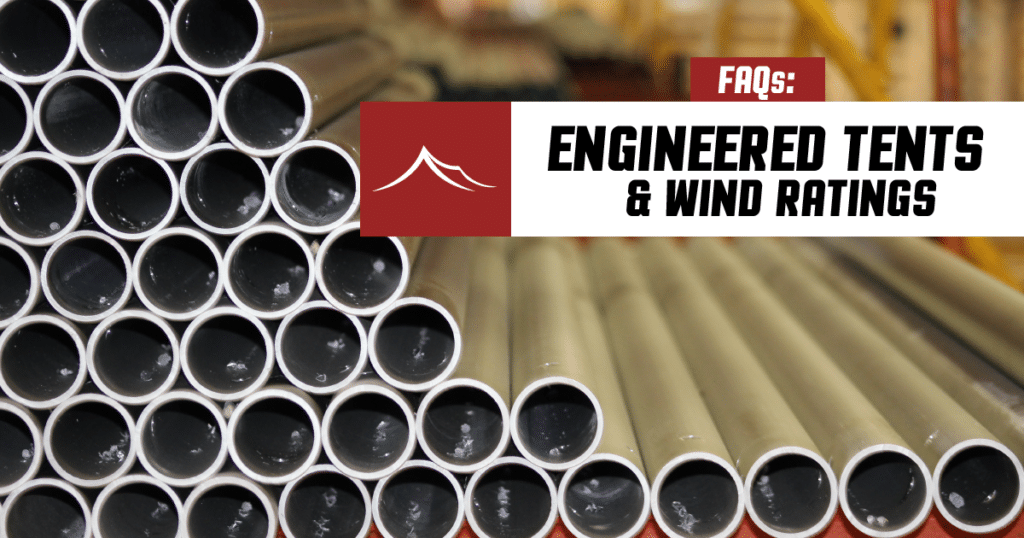Event Tents
Engineered Tents and Wind Loads 101
July 6th, 1944, also known as the day the clowns cried, was one of the worst fire disasters in the history of the United States. During an afternoon performance of the Ringling Bros. and Barnum & Baily Circus, a massive gasoline and paraffin-fueled fire broke out. More than 160 people either died in the flames or couldn’t escape the hysteria of evacuating the big top in time.
Since then, tent design and production have undergone a transformation. Even though tents are temporary structures – they are still expected to withstand certain weather conditions and provide safety and shelter to people, much like a building would. In order to do that, tent manufacturers and designers must apply engineering principles to their products and provide guidance to their consumers on what types of conditions their products can stand up to.
Over the next 12 articles, we will fully explore the topic of Engineered Tents. From wind ratings to key factors in planning, types of ballasts, pull testing, flame registration and more – this series will serve as a course for professionals in the tent rental industry to be informed about engineered tents.
What is an Engineered Tent?
An Engineered Tent is a term in the industry used for a tent which has been analyzed and signed off on by a licensed Professional Engineer (PE) in a state. In most cases, the PE is evaluating the tent under a specific set of conditions for its performance with Wind Ratings being the most requested item.
Matthew Perra is an engineer, owner, and main product designer at Tent Renters Supply. Perra says that while tents aren’t built to building code, but depending on their size, location, and type, may meet “code” in some locations.
“How most PE’s approach the analysis is to establish the maximum wind load a tent can withstand using the same methodology or calculations used in building code guidance typically pulled from the American Society of Civil Engineers’ document called, Minimum Design Loads and Associated Criteria for Buildings and Other Structures (ASCE 7-10),” says Perra.
“What these documents try to do is establish, mathematically, under a specific set of conditions, what is the wind load the tent can withstand. Part of the challenge we have in establishing wind loads is that a lot of the elements that go into it are combined factors of the elements of the designed product we actually have, and then it’s also tied into where is the tent being installed and how is it being used, or what we refer to a lot of times as “environmental variables” that we don’t have control of. That’s where some complexities in this whole process come into play.”
How to Use the ASCE 7-10
Utilizing ASCE 7-10, there are some critical factors which influence the performance of a tent. The tent’s structure and mechanical properties are also taken into consideration with physical location, surrounding structures, local topography, anchoring plans, and even functional use.
The next installment of our series will explore Applicable Codes, to help rental companies make informed decisions about which tents to install and the best practices to ensure safe, memorable events.
Tent Renters Supply is a leader in Engineered and Non-Engineered Tents
At Tent Renters Supply, we can supply both Engineered and Non-Engineered Tents. For details about your tent and its performance contact our customer service team today at 1-800-865-5064 for details.

